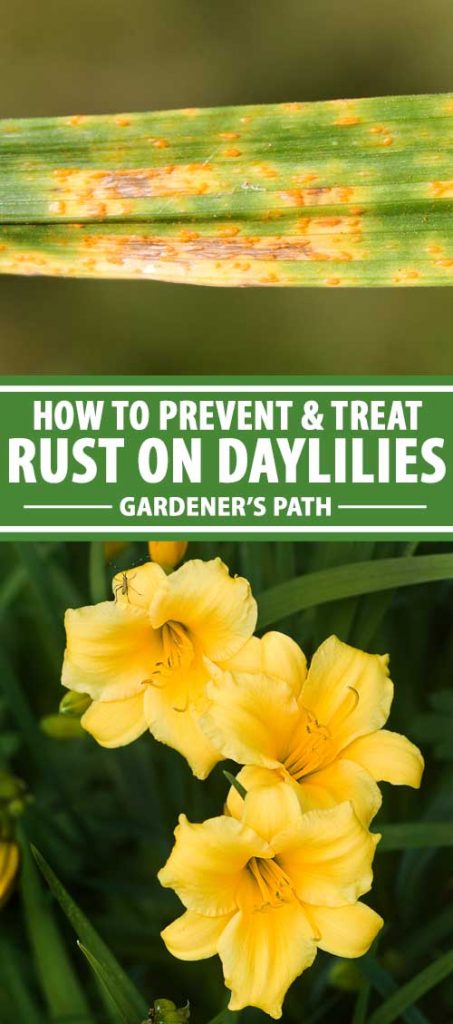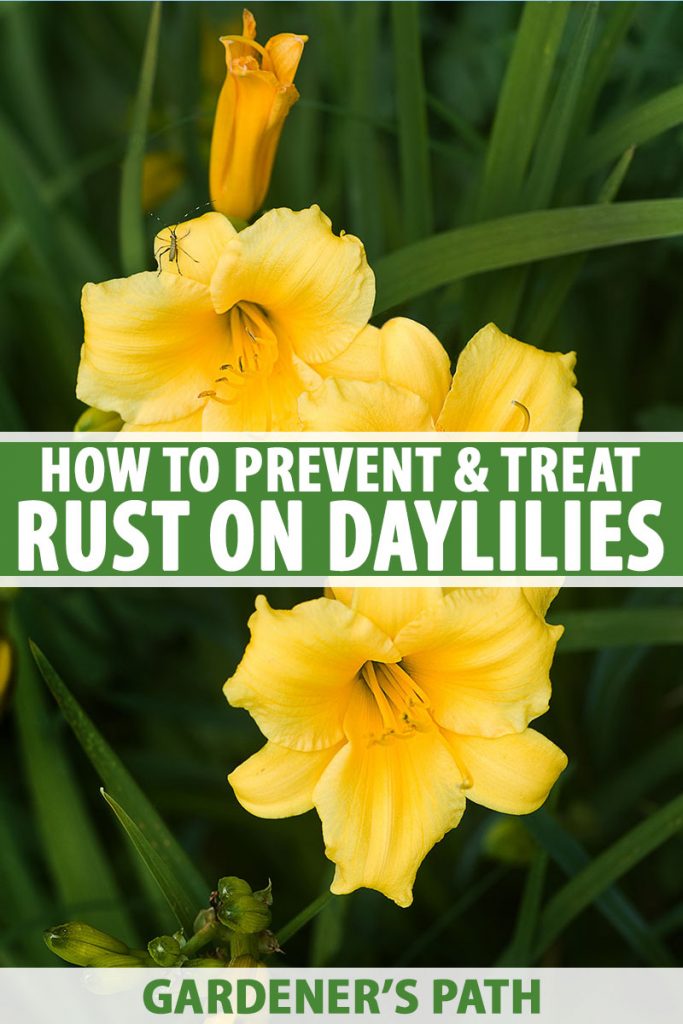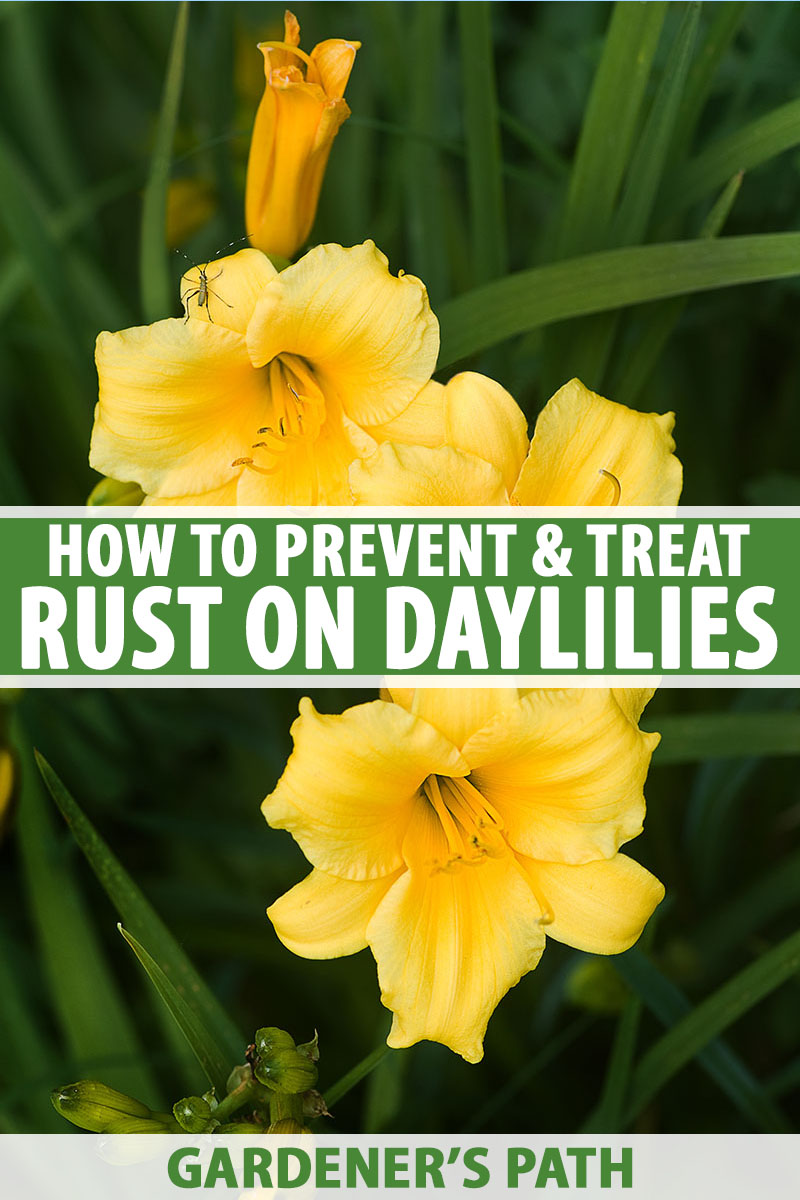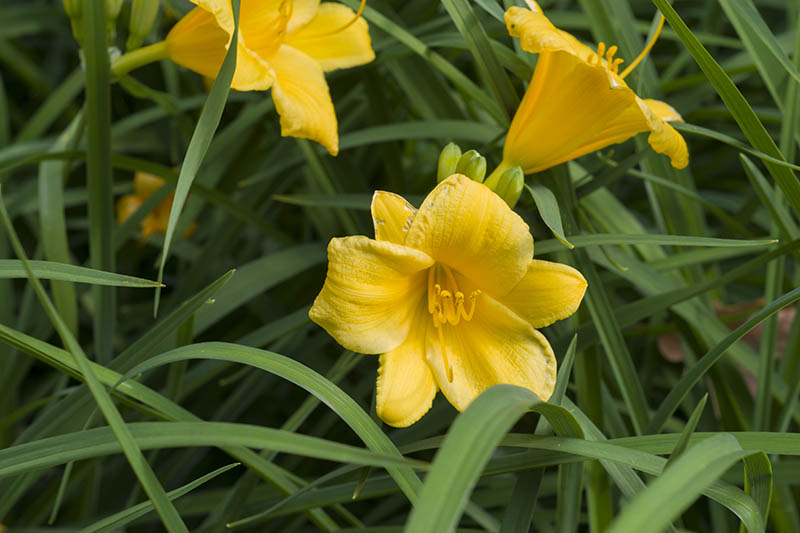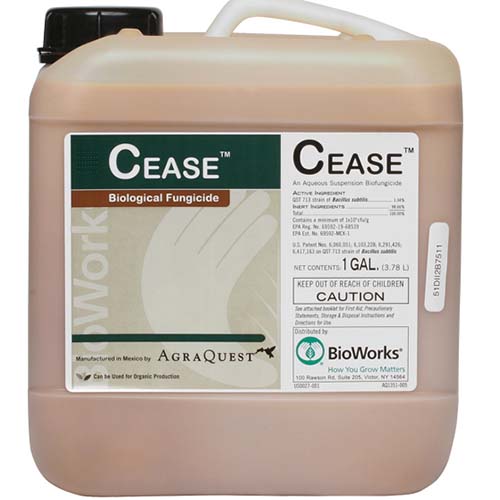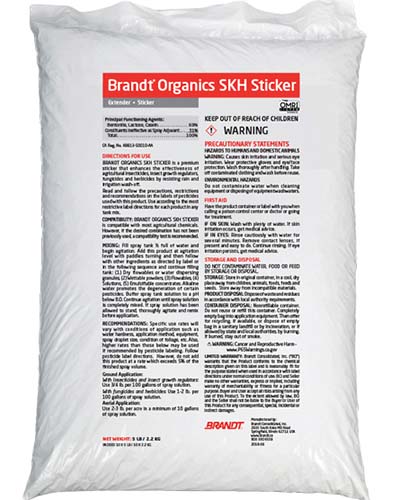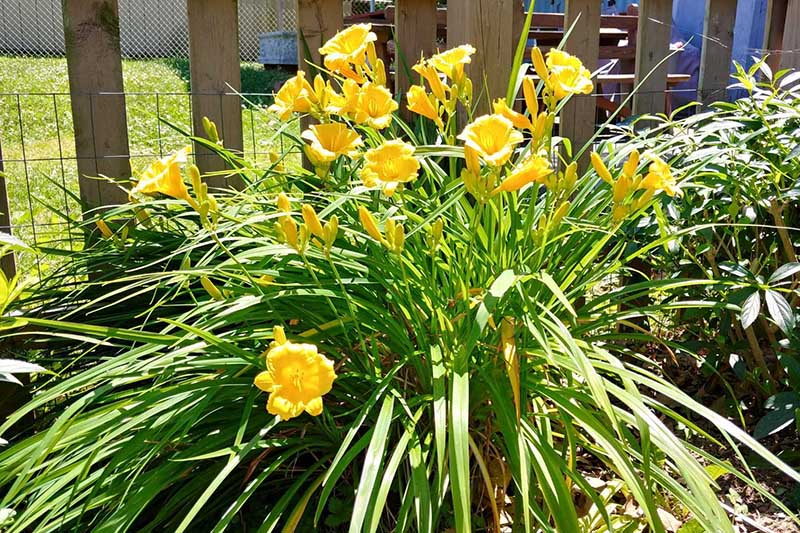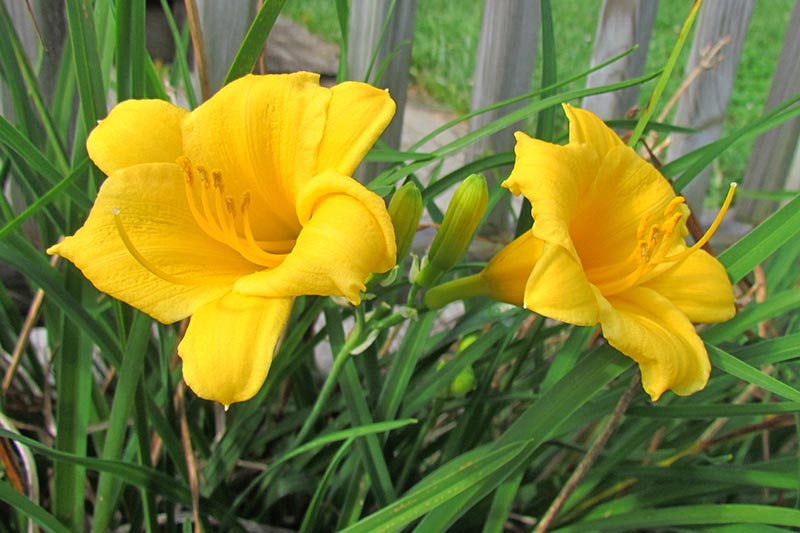It sprouts from a rhizome and has bare, slender stems – or scapes – that rise from clumps of foliage that resemble large blades of grass. Each bears an abundance of blossoms that appear intermittently throughout the summer, and each bloom lasts just one day. We link to vendors to help you find relevant products. If you buy from one of our links, we may earn a commission. In this article, we talk about recognizing, managing, and preventing daylily rust, a condition that may present itself when growing conditions are less than ideal. Here’s what’s in store: Let’s get started.
What Is Daylily Rust?
Rust is a fungal disease that spreads mostly by air and water via microscopic spores.
There are 168 genera of parasitic fungi that can cause rust. Over half of these belong to the Puccinia genus, and each species has a favorite host plant. For example, the pathogen that spreads canna rust is P. thaliae. In the case of the daylily, the rust-spreading parasite is P. hemerocallidis. Rust gains a foothold when favorable weather conditions – prolonged damp conditions and high relative humidity – and gardening practices (or a lack thereof) come together to create a sort of perfect storm.
Ideal Growing Conditions
Hemerocallis thrives in a full sun to part shade location.
It prefers organically-rich loam, but will tolerate average to poor quality soil, provided it has a slightly acidic pH of 5.5 to 6.5 and drains well. Plants require about an inch of water per week and thrive in soil that is kept evenly moist, but never waterlogged. Deadheading plants throughout the growing season encourages reblooming. Dividing clumps every few years keeps them healthy and vigorous. When these conditions are not met, plants can become stressed. A lack of proper airflow, an overabundance of water, to little sunshine, and maybe a bit of neglect on the part of the gardener, can serve as invitations to the fungi that cause this disease. So what should you look out for? And what’s a gardener to do?
Signs of Trouble
The daylily is a dynamic bloomer with a high tolerance for heat and humidity. However, if there is an excess of moisture or humidity in the garden, it becomes vulnerable to pathogens that thrive in damp conditions.
Unless you inspect the undersides of your daylily leaves often, you may not know you have rust until the tops of the leaves become discolored and disfigured. However, the trouble may start well before that. The first sign may be a slight yellowing, called “chlorosis,” on one or two leaves. This can happen as a result of either too little or too much water, and may be accompanied by wilting. If it’s been extremely hot and dry, it’s more likely that the plants are dehydrated, in which case they have little appeal to P. hemerocallidis. On the other hand, if it’s been especially rainy and humid, or if you have overwatered, the yellowing foliage is most likely to be from oversaturation. This creates a climate conducive to fungal spore germination.
The ideal points of entry for parasitic fungi are the pores, or stomata, on the undersides of the leaves. These are the openings that allow for the exchange of gas and air between the plant tissue and the environment When P. hemerocallidis spores land on moist leaf tissue, they begin feeding on the plant tissue and may go unnoticed until the damage is extensive. Within a week to 10 days of feeding, a telltale trail of yellowish-brown spots develops that, upon close observation, are actually raised blisters, or pustules. As the spots increase in number, they combine to form rusty, reddish-brown patches that leave a powdery coating on the hand when touched. Next, the underside damage penetrates the leaf tissue, appearing as brown blotches on the leaf surface. This dead, or necrotic, plant tissue becomes dry and flaky, breaks away, and leaves holes in the foliage. Over time, stem and leaf damage cripples the plant, causing it to drop its foliage, wilt, and die. Affected plants must be uprooted and disposed of in the trash. Do not place them on the compost pile. You can also burn them, but even the ashes may still contain fungal spores, so put them in the trash, too. One daylily with rust puts all the others in your garden at risk of contracting the disease.
Treatment Options
At the beginning of a fungal outbreak, you may attempt to salvage affected plants and protect neighboring ones with an application of a targeted fungicide formulated to treat rust. Also, even if you do treat plants, the spores may still be lurking in dead plant material and on the ground where they can overwinter, only to reappear the following spring. This is a systemic chemical product, which means it is absorbed and penetrates plant tissues. This product must be mixed with water and sprayed onto the surface and underside of foliage, per package instructions, to control fungal spread. It may also be used preventively. Rust can be difficult to manage, as it has the potential to become resistant to fungicides. For this reason, some gardeners alternate a systemic product with a contact, or protective product. Contact products are applied to foliage and don’t penetrate the plant tissues. This is all well and good for commercial growers, but it may seem like a lot of effort for the home gardener. An alternative to chemical treatments, and to avoid the necessity of alternating systemic with contact products, is a biofungicide called CEASE™, available from Arbico Organics.
CEASE™ from Arbico Organics This is a product that works on contact with foliage. It contains Bacillus subtilis, a naturally occurring bacterium, as opposed to a chemical fungicide. The spores of the bacteria compete with the fungal spores and prevent them from growing. P. hemerocallidis is not likely to become resistant to this product. Find CEASE™ from Arbico Organics in a variety of package sizes. Learn more about controlling plant pathogens with B. subtilis in this guide. The only drawback to using a product like CEASE™ is that it requires the use of an additional product, called a spreader sticker, to make it rain-fast. This allows the fungicide to remain on the surface of the foliage in spite of rainfall. Arbico Organics offers a sticker spreader called Brandt® Organics SKH.
Brandt® Organics SKH Sticker This product is compatible with most agricultural chemicals, but compatibility testing is advised. Find Brandt® Organics SKH Sticker now from Arbico Organics in five-pound packages. It can be quite challenging to attempt to eradicate rust from the garden. Many plants are susceptible to pathogens specific to their botanical species. And of the many chemical treatments available, some contain toxic heavy metals that pose risks in the home garden. With that said, let’s turn our attention from treatment after the fact to prevention.
Preventative Strategies
Rather than dealing with rust that’s already underway, why not do everything possible to keep it from gaining a foothold in the first place? Here are 11 tips for making rust unwelcome in your garden:
- Choose daylily varieties that are disease-resistant.
- Plant in a sunny location, with at least six hours of direct sunlight per day. This will help moisture to evaporate from the leaves.
- An inch of water per week is plenty. Water at the soil level to keep foliage dry or consider installing a drip irrigation system to maintain good drainage, and keep water off the leaves.
- Apply a layer of mulch around plants to inhibit weeds, which may harbor fungal spores.
- Space plants appropriately, 12 to 18 inches apart, to ensure adequate airflow and avoid increasing relative humidity between plants.
- Deadhead and prune leggy stems to open plants up to airflow, avoid increasing relative humidity, and allow fungicides to penetrate (if needed).
- Sanitize garden tools with a 10 percent bleach solution to prevent the spread of disease from plant to plant.
- Apply a well-balanced fertilizer in spring to promote a strong flush of growth.
- Divide plants every two to three years to maintain vigor and increase airflow.
- Avoid planting daylilies in an area that has had a rust outbreak in the past.
Mindful Management
I like to grow daylilies here in southeastern Pennsylvania. One cultivar I’ve had good luck with over the past 15 years is Hemerocallis ‘Stella d’Oro.’ It’s a compact foot-tall cultivar with abundant golden-yellow, ruffled flowers. And while no cultivar is completely rust resistant, this one ranks above average. Summers here are always humid, and often rainy, but I’ve never had a problem. (Well, until this year, unfortunately). In addition, my roadside plants withstand yearly bombardments from winter road salt. Choose disease-resistant plants, use best gardening practices, and check foliage regularly, particularly the undersides where the trouble generally starts.
If you see the warning signs, act promptly. Remove and dispose of affected material and sanitize your tools. Apply fungicide as needed, per package instructions. The daylily is a summer classic that looks stunning when planted en masse along a walkway or roadside. Don’t hesitate to make it a landscape staple! Are you growing daylilies? Have you had any problems with this disease? Share your tips in the comments below. And to learn more about managing pests and disease in your garden, check out the following guides next:
How to Identify and Treat Common Rose Diseases How to Identify and Treat Hydrangea Diseases
© Ask the Experts, LLC. ALL RIGHTS RESERVED. See our TOS for more details. Product photos via Arbico Organics and Quali-Pro. Uncredited photos: Shutterstock.
